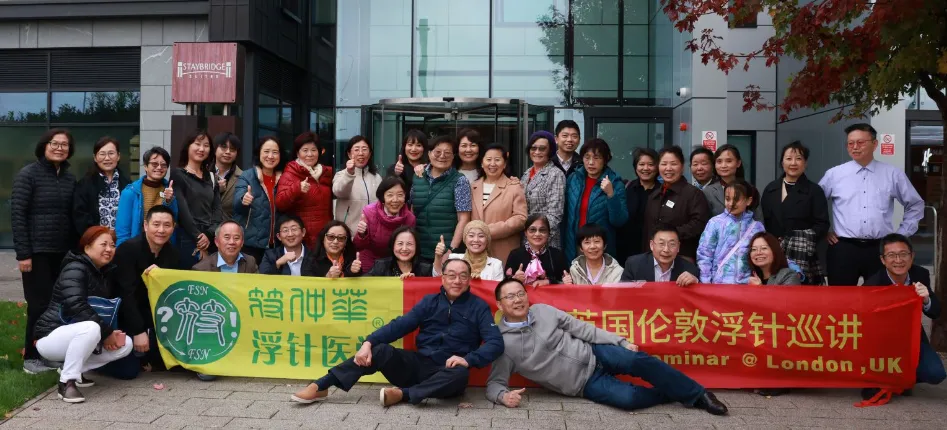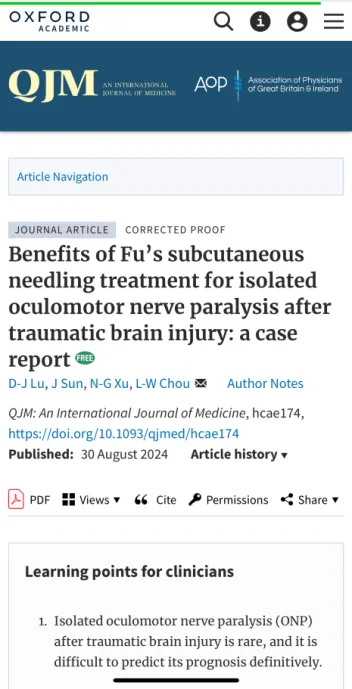Fus Subcutaneous Needling Association New York Presents: Online Sharing Session in Celebration of the Annual Conference
Due to the ongoing pandemic over the past year and more, which has disrupted all aspects of life, work, and study, we have been unable to hold in-person Fu’s Subcutaneous Needling training sessions. In response, the New York Fu’s Subcutaneous Needling community is hosting its first online sharing session, coinciding with the 10th Annual Academic Conference of the Fu’s Subcutaneous Needling Professional Committee of the World Federation of Chinese Medicine Societies. This special event in October offers a chance to celebrate the conference and enhance our theoretical and practical knowledge.

We are fortunate to have gathered a distinguished group for this session, including former President Dr. Chen Pingqing, Karen Du from New Jersey, Dr. Li Hongmei from California, Dr. Song Wei from New York, Dr. Li Weidong from Maryland, Dr. Xu Lirong from Nebraska, Peng Xiaoyan, Ni Nan, Dr. Lei Lina, and Dr. Hu Zhengxi from China, who will answer questions.
The sharing session saw enthusiastic participation from attendees. Dr. Chen Pingqing discussed the theoretical applications of the new Qi and Blood Theory and its use in treating complex cases with Fu’s Subcutaneous Needling. Dr. Li Hongmei, working at a top hospital in California, shared the status of Fu’s Subcutaneous Needling in California and her experience in January 2020, when she introduced Fu’s Subcutaneous Needling to Western medical practitioners at a Jewish hospital in Los Angeles, which was well-received.
Dr. Karen Du, who participates in every training session when Dr. Fu visits New York, shared her exciting experiences with Fu’s Subcutaneous Needling, particularly its application in treating infertility and supporting IVF treatments. Fu’s Subcutaneous Needling has been shown to significantly enhance endometrial thickening and increase embryo implantation chances.
Dr. Song Wei, now a well-known figure locally due to Fu’s Subcutaneous Needling, reported a high demand for appointments, with waits extending up to a month. He also emphasized the need to be cautious with re-infusion for elderly and frail patients, advising against excessive re-infusion. Dr. Li Weidong, an experienced Fu’s Subcutaneous Needling practitioner in Maryland, shared cases of lower limb numbness and coldness, contributing to our understanding of the clinical application of Qi and Blood Theory. Dr. Xu Lirong discussed Fu’s Subcutaneous Needling’s treatment of TMJ (temporomandibular joint disorder), focusing on masseter and temporal muscles, and suggested that if immediate effects are not visible, allowing some time for the treatment to take effect may be beneficial. Ni Nan, Peng Xiaoyan, and Dr. Lei Lina also shared their clinical experiences and raised questions, noting that while Fu’s Subcutaneous Needling can help with patient anxiety, using needles of size 28 or 26 for dispersal has its limitations.
Finally, the President of the New York Fu’s Subcutaneous Needling Association presented images and discussed the application of Fu’s Subcutaneous Needling in treating various conditions, including cervical spondylosis, facial paralysis, migraines, tinnitus, and dizziness. Traditional acupuncture points, such as the supraclavicular fossa, which are contraindicated, can be addressed with Fu’s Subcutaneous Needling. Treatment for severe neck pain due to post-surgical or chemotherapy adhesions and heel pain or Achilles tendonitis with Fu’s Subcutaneous Needling were also covered.
Dr. Cai Bin shared several thoughts:
- Understanding the indications for Fu’s Subcutaneous Needling requires continuous practice. If traditional methods are ineffective, Fu’s Subcutaneous Needling might offer surprising results.
- The theories of affected muscles and Qi and Blood can aid clinical treatments, such as handling the medial thigh muscle group and treating pelvic gynecological disorders, often related to kidney meridian pathways.
- Many practitioners reported difficulties with re-infusion due to patient discomfort and fear. Dr. Hu Zhengxi clarified that re-infusion is not necessary for all patients. Typically, active Fu’s Subcutaneous Needling dispersal is emphasized, especially for elderly and frail patients.
- For needle pain, inserting the needle at a 90-degree angle can help. If pain occurs, adjusting the direction to avoid nearby blood vessels may alleviate discomfort.
- We have agreed to hold another themed learning session in two months for mutual exchange. The Fus Subcutaneous Needling Association New York serves as a platform for Fu’s Subcutaneous Needling learning, communication, and improvement, facilitating the exchange of clinical techniques and business experiences, which is far more efficient than individual exploration.














Leave a Reply